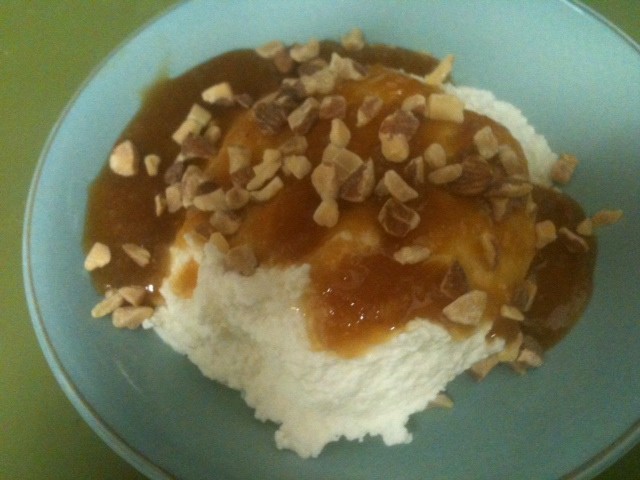
Sometimes I'm in the mood for pie, cake or a baked fruit dish, and sometimes I can't be bothered. Sometimes I need something fast, when it's too hot to bake, and I turn to mel i matò, a Catalan dessert that's almost as simple as figs on a plate.
Mel i matò is deceptively simple: it's fresh cheese such as ricotta, with honey poured over it and then often sprinkled with nuts or fresh berries. It can be assembled in under five minutes, but a little preparation in advance will turn this from an emergency dessert for unexpected company to a summer treat to look forward to anytime.
]
First, the cheese. While there are some very good commercial ricottas out there, it's worthwhile making your own; even the very freshest ricotta is usually at least a day old, and it doesn't take very long to make. You'll need a 6-quart or larger pot, a colander, and a cloth that is bigger than the colander. You can use cheesecloth, 4 to 5 layers of it, or butter muslin, but I don't keep those things in my small house. I use scrupulously clean old t-shirts, which I wash in regular hot water after washing in the laundry. Cut out the armpits if you go this route–even if you don't sweat, anti-perspirant is not a valid cheese ingredient.
1 gallon whole milk
1 quart buttermilk
1. Dampen the cloth and lay it over the colander.
2. Mix the milk and buttermilk together and bring, very slowly, up to 185ºF (the magic cheese-making temperature). You can do it in a double boiler if you have one that's large enough, or you can do it very carefully directly over the burner (but stir constantly, lest your dairy scorch).
3. As it comes up to 185ºF, small bubbles will start to form around the edge and curds will form and float to the top.
4. Very carefully ladle–don't pour–the curds and whey into the cloth-lined colander.
5. Gather the edges to make a bag, and use a rubber band or a piece of twine to close it.
6. Let it drain for 15 minutes, and don't press down to speed it up.
7. Carefully remove the cheese from the bag, put it in a metal or glass bowl, and refrigerate until cold.
Next, the honey. Don't use commercial bear brain lubricant (you know exactly what I mean, don't pretend you've never stopped to think about the poor bear from the grocery store shelf). Buy honey from a local producer. Sample it first. You want a honey that's got some character to it, because it's one of three ingredients in the dessert. Orange-blossom honey is nice and delicate; buckwheat honey is a kick in the pants. Aim for something in between, because the cheese will be stronger tasting than commercial.
Next, the nuts, which are optional anyway. Walnuts or almonds would be the usual choices in Catalunya, but pecans work well too. Start with raw nuts; roast them on an ungreased pan at 350ºF, shaking occasionally, until you start to smell nuts. Chop them, if you want, after they come out, and use them while still warm and while the oils are still at the surface and can move onto the honey and the cheese. If it's 100ºF out and you'd rather chew tin foil than light the oven, use berries–or skip it altogether.
Finally, the assembly. Find a coffee cup–the old kind, from back before sixteen fluid ounces was a “medium” coffee–and spoon the cheese in, leveling it off. Turn a small plate upside down onto the cup, turn the whole thing upside down (so the coffee cup is now upside down) and tap gently to get the cheese to release. Spoon honey over the top; add the chopped nuts or berries.
It's a simple dessert, mel i matò, but with a little care it can become something really special.
Follow Stick a Fork in it on Twitter @ocweeklyfood or on Facebook!

